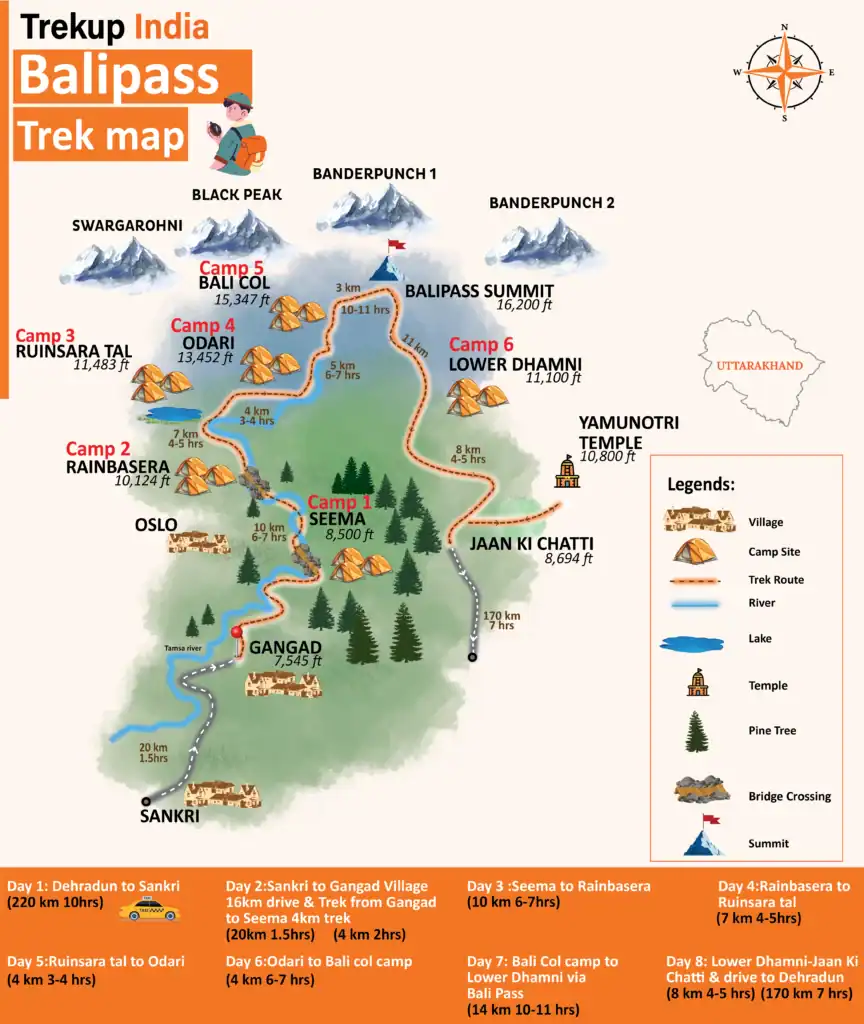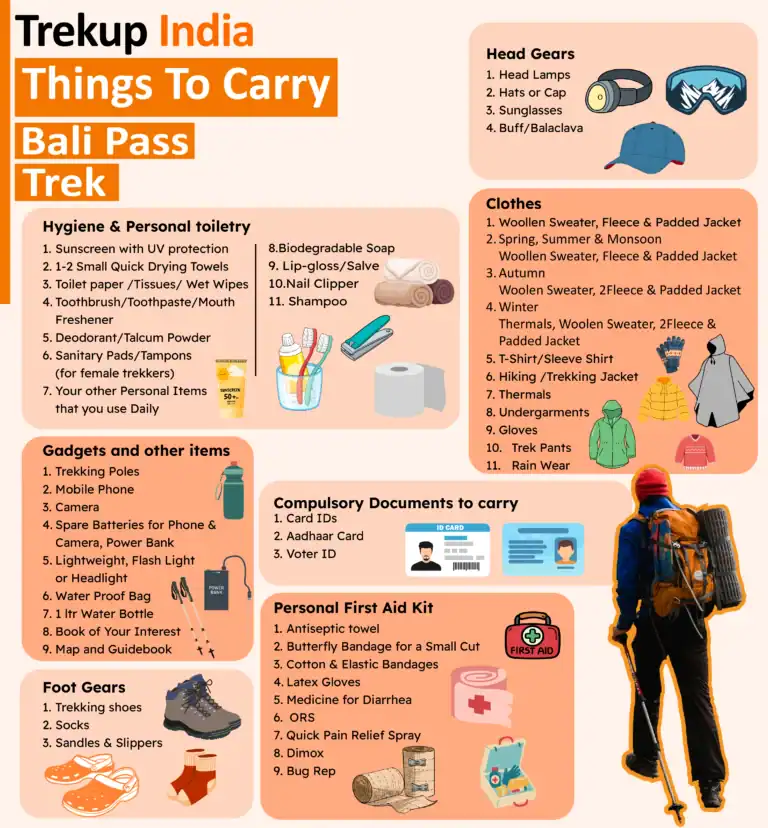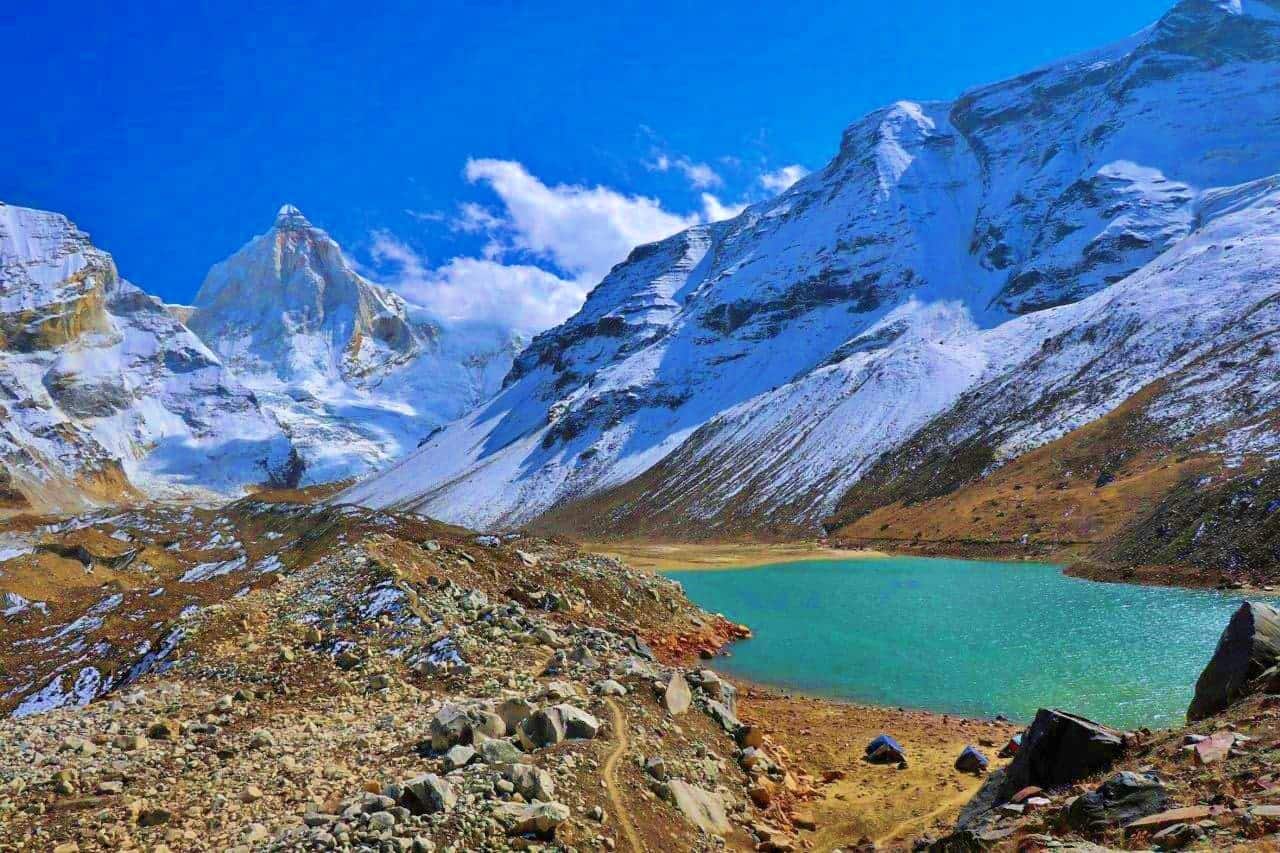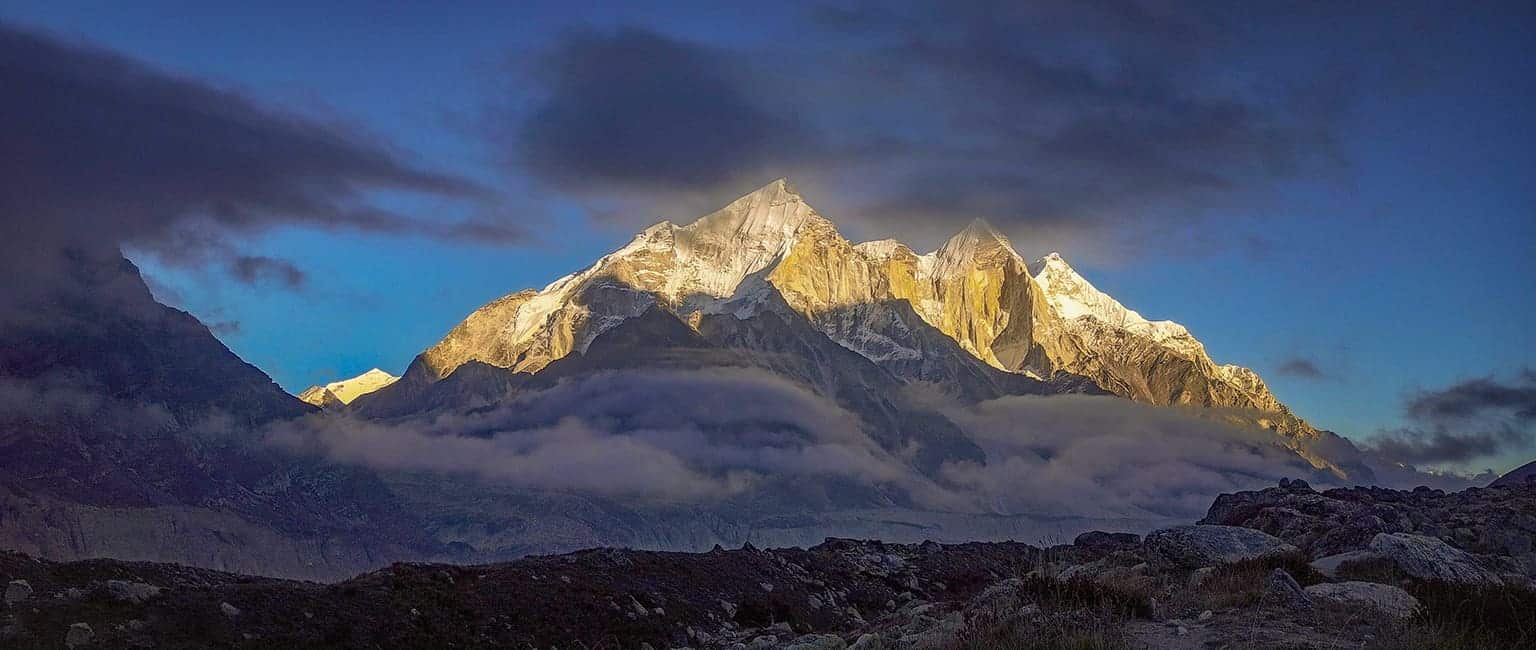30+ Years Of Trusted Trekking Expertise | Crafting Memories Since 1993
Trek Grade
Difficult
Highest Altitude
16200 ft
Base Camp
Sankari
Best Time
May, June & Sept, Oct
Trek Distance
60 Km
Not sure which trek is right for you? Trekup India’s Mountain Experts have you covered.
Not sure which trek is right for you? Trekup India’s Mountain Experts have you covered. From figuring out if a trek matches your fitness level to knowing who you’ll be trekking with, we’re here to answer all your questions. Reach out to our Mountain Experts and plan your trek with confidence.
Bali Pass Trek
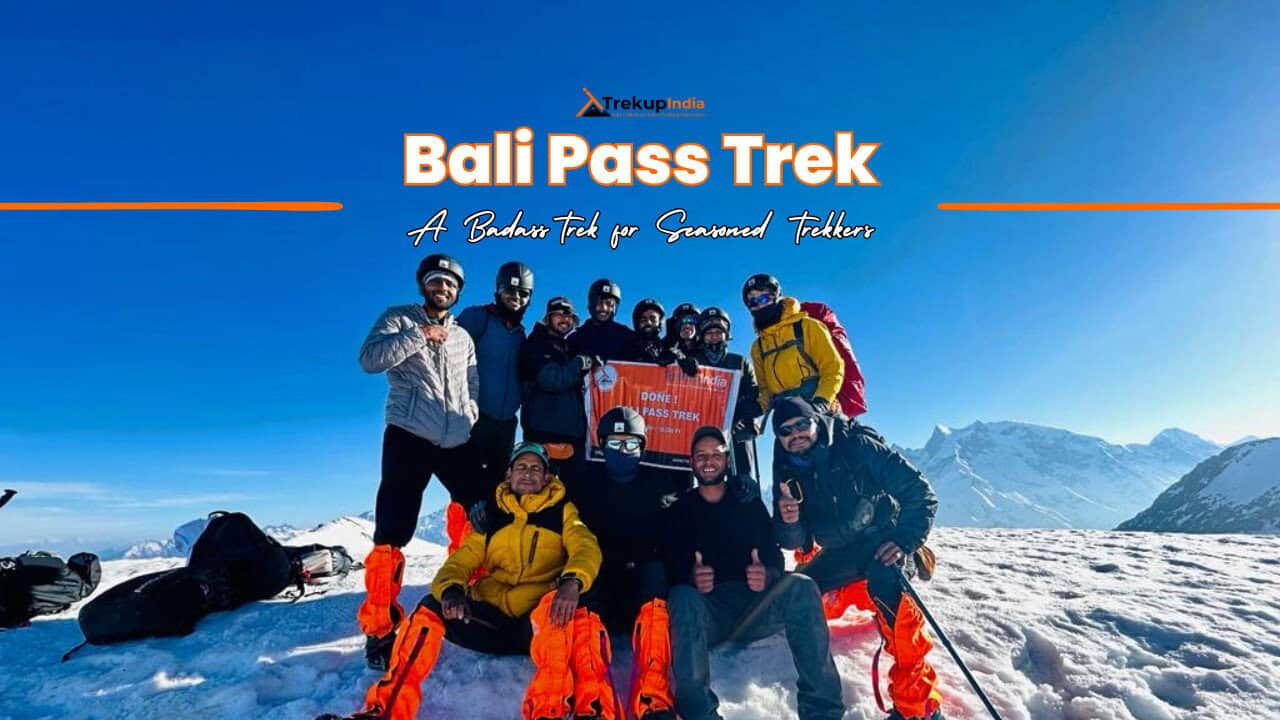
The Bali Pass Trek is a challenging and exciting trekking adventure in the Garhwal region of the Indian Himalayas. It is a high-altitude trek that takes you through some of the most scenic and breathtaking landscapes, with snow-capped peaks, lush forests, and glacial lakes. This trek is not for the faint-hearted; it requires good physical fitness, endurance, and a sense of adventure. Yamunotri and Har Ki Dun Valley link through Bali Pass Trek. Finding a trek that allows you to experience the pure grandeur of crossing the Himalayan Pass is rare. It crosses the confluence between Tons and Ruinsara Rivers and enjoys the unspoilt serenity and lush meadows at Devsu Thach. Soon, the greenery will open up to alpine zones. The Pass, at 16,207 feet, offers 360° panoramic views of the Bandarpoonch and Kalanag peaks. This trek is not for beginners, and it’s hard work. At a staggering 5,000 elevation, the Pass is located in the Garhwal kernels. The stunning high-altitude Pass offers breathtaking views of the majestic Himalayan peaks like Swargarohini, Kala Nag and Bandarpoonch. You will be able to relive your childhood memories with Bali Pass Trek. It is filled with adventures and beautiful views. The trek begins in Sankri and finishes in Jankichatti. This trek requires some trekking experience.
The Bali Pass Trek is an exhilarating journey that connects the stunning Yamunotri and Har Ki Dun Valleys, situated at an impressive height of 16,200 feet. The adventure begins in Dehradun, where participants are picked up from the railway station for a 10-hour drive to Sankri Village, covering a distance of 220 km. The first night is spent at a local hotel in Sankri. The next day, a 12 km drive to Taluka is followed by a 12 km trek to Seema through lush forests, where a camp is set up for the night. On the third day, a moderately challenging trek to Rain Basera at 10,200 feet features steep inclines and declines. The Rain Basera campsite is the resting place for the night. The following day, the trek continues to the picturesque Ruinsara Tal, a stunning alpine lake surrounded by rolling meadows. Camping beside the lake is the highlight of the night.
The fifth day involves trekking towards Odari at an elevation of 13,100 feet, covering a distance of 4 kilometres and taking around 3 to 4 hours to complete. The journey includes navigating a river and admiring the Swargarohini range of peaks. After the trek, a warm lunch is enjoyed at the campsite, followed by staying in tents. The following day, the trek proceeds from Odari to Bali Col Camp, traversing a mountain ridge with a steep incline until reaching Bali Col Camp at 15,100 feet. The trek spans 5 kilometres and usually requires 6 to 7 hours, with accommodation for the night at Bali Col Camp.
Day 7 marks the summit expedition as the trek heads to Bali Pass before descending to Lower Dhamni. Bali Pass, perched at an elevation of 16,200 feet, offers unhindered views of Bandarpoonch, Kalanag, Ruinsara, and Yamunotri valleys, making it the longest day of trekking, covering 14 kilometres and lasting 10 to 11 hours. The descent from Bali Pass is challenging due to its steep and technical nature. The expedition concludes with a descent from Lower Dhamni to Janki Chatti via the Yamunotri temple, followed by transportation back to Dehradun.
The Bali Pass Trek promises breathtaking vistas of mountain ranges and diverse landscapes, but it demands advanced skills and expertise, featuring narrow paths and hazardous sections. The trek encompasses a moderate climb from Taluka to Seema, entrance into the picturesque Ruinsara Valley, and increasingly demanding terrain as participants proceed to Odari, with steep inclines, rocky terrain, and snow-covered glaciers. The final ascent to Bali Pass is particularly challenging, as is the equally tricky descent involving boulder-strewn paths and steep green slopes, culminating in reaching Yamunotri, surrounded by lush forests. Being fully prepared and ready for these challenges is crucial, emphasizing the importance of physical fitness and mental resilience.
Prior to embarking on this trek, it’s essential to ensure sufficient cash, as the last reliable ATM is in Dehradun. Also, be prepared for limited mobile connectivity, which becomes unreliable after Purola. The JIO & BSNL network at the Sankri base camp can be used, but it could be more stable, so making important calls at Purola is advisable to avoid inconvenience.
The Bali Pass Trek’s top attractions include Ruinsara Tal, a glacial lake within the Swargrohini peaks, surrounded by picturesque meadows and Rhododendron shrubs, and the ancient villages of Osla and Gangad, known for their unique traditions and architectural wonders. Furthermore, the beauty of Devsu Thatch’s alpine meadows, nestled amidst towering peaks like Swargrohini and Kalanag, offers a serene backdrop to admire nature’s splendor, enhancing the sense of tranquility and peace.
Trek Cost
-
Twin-Sharing Tent Accommodation Provided
-
Pickup time 6.30 A.M from Prince Chowk, Near Dehradun Railway Station & Drop by 8-9 P.M
-
+₹1600 Extra For Transport
Fix Departure Dates!
Trek Cost Inclusions and Exclusions!
Trek Cost Inclusions
- Stay: 6 Nights of tented accommodation at individual campsites of Trekup India on twin sharing and 1 Nights at Trekup India Luxury Hotel on sharing basis.
- Meals: Trekup India will provide freshly cooked meals during the trek starting with Dinner on Day 1 to lunch on day 8 (Meals are simple, nutritious, and vegetarian)
- Transport (Optional): Dehradun to Sankari and return from Janki-chatti to Dehradun. ( INR 1600 extra )
- Trek Insurance (Optional): Trekup India recommends that all trekkers consider getting trek insurance. This is optional, but highly recommended. Trek insurance covers unexpected events that may occur during your trek. The cost of the insurance starts from INR 210. Please read more about what is included in the coverage and why it is mandatory on treks.
- Trek Equipment: Sleeping bag, Sleeping tents, Kitchen tent, Dining tent, Toilet Tent.
- Amenities: All utensils, sleeping mattresses (Black foam mats), Crampons, and Gaiters for snow.
- Health & Safety: First Aid Box, Oxygen Cylinders, Stretchers, Oxi meters, BP Machines, health.
- Permits: Forest Permits and Camping Permission Fee
- Trek Crew: High Altitude Chef, Helpers, Trek Leader & Guides, and other support teams.
- Potters & Mules: Potters and Mules are to carry all trekking equipment, ration, and vegetables.
Trek Cost Exclusions
- GST 5% (it is Mandatory)
- Any Meals/accommodation beside the itinerary or not mentioned in the program.
- Any Bus / Airfare to/from trek start/end point
- Personal Medical expenses do carry your medication.
- Any personal services such as Laundry, phone calls, liquors, mineral water, etc.
- Any still / video camera fee
- Any Entrance fee Monuments, Monasteries, Museums, Temples – Pay directly on the spot.
Backpack Offloading (Mule/Porter Charges)
Offload Charges: ₹4830 per bag for the full trek if paid online in advance.
On-spot Payment: Charges may increase by up to 30% if paid at the base camp.
Weight Limit: Each bag must not exceed 10 kg.
Note: Offloading is optional and is recommended for those who prefer to trek with a lighter daypack.
- Any emergency evacuation charges
- Any services that are not mentioned in the cost inclusion section.
Bali Pass Trek Videos
Videos by experts watch these videos to prepare well for a Successful Trek
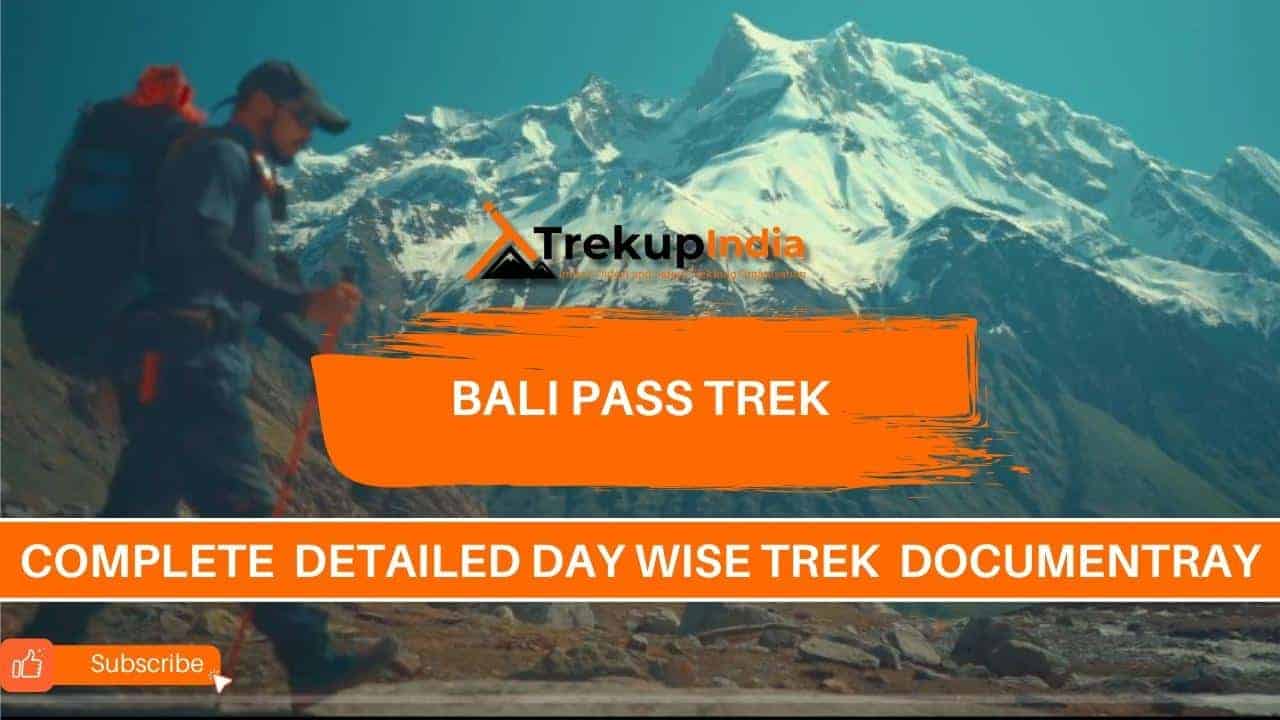
Want To Trek Like Pro?
Basically, watch these videos if you want to trek the same way professional trekkers do and make your skills better. These videos contain useful tips and techniques to further improve your trekking skills itself. These videos actually help both new and experienced trekkers improve their trekking skills. These videos definitely provide useful tips that make your trek better. We are seeing that these videos by Trekup India experts will only help you make your trekking skills better.
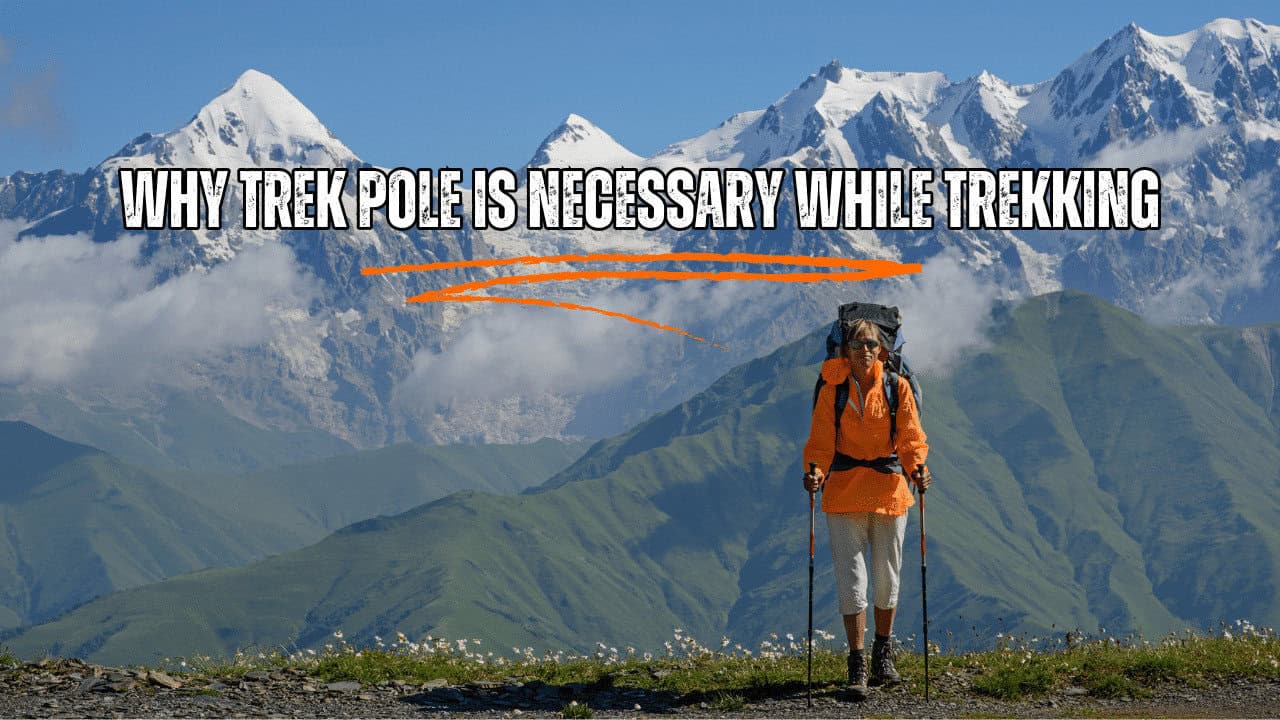
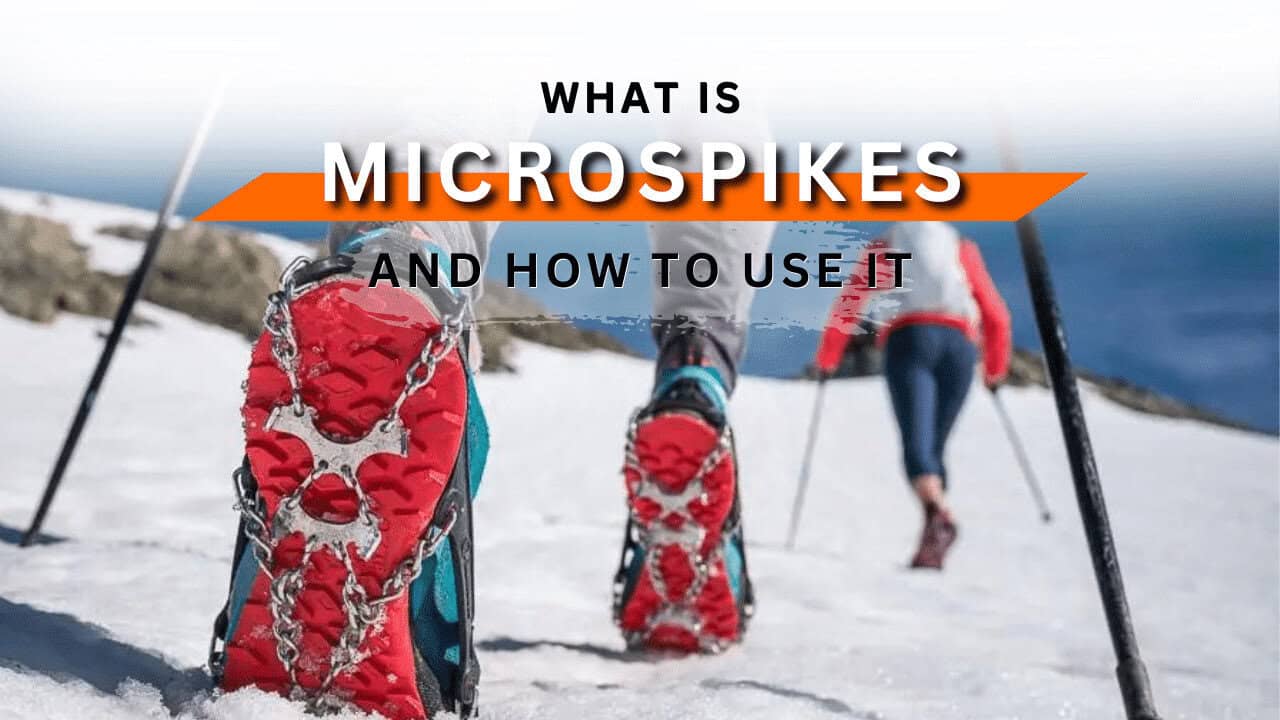
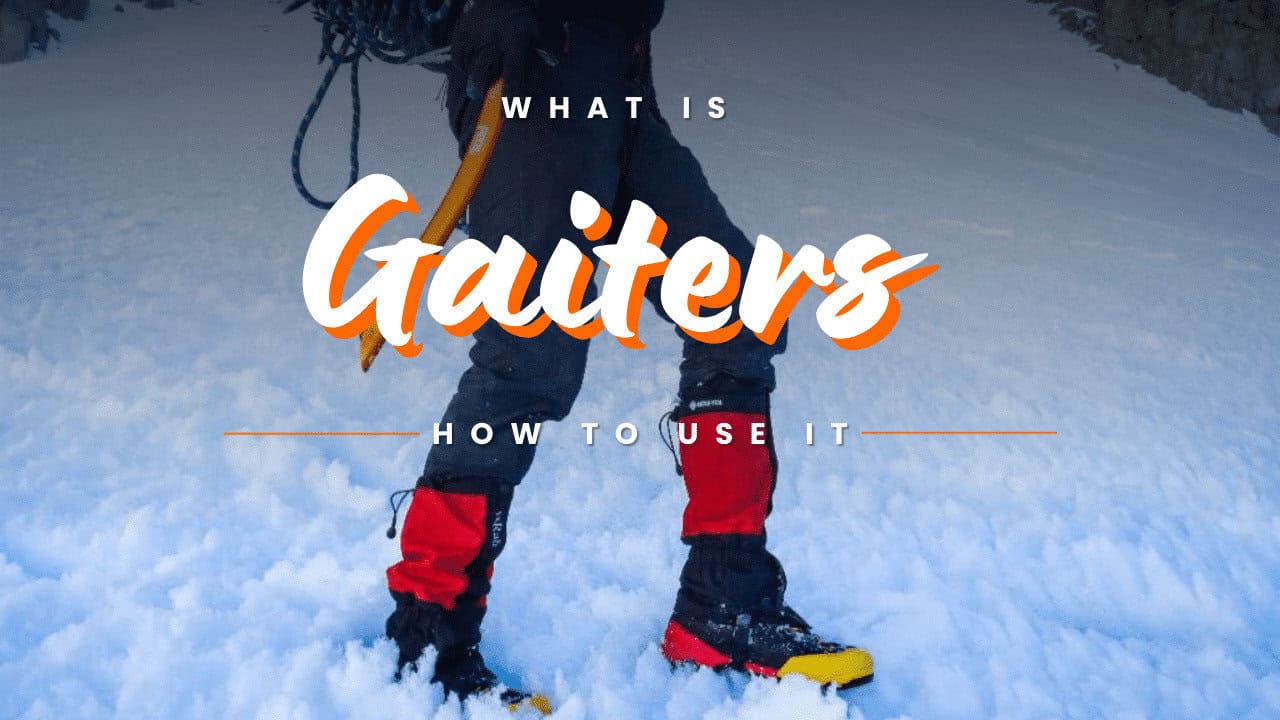
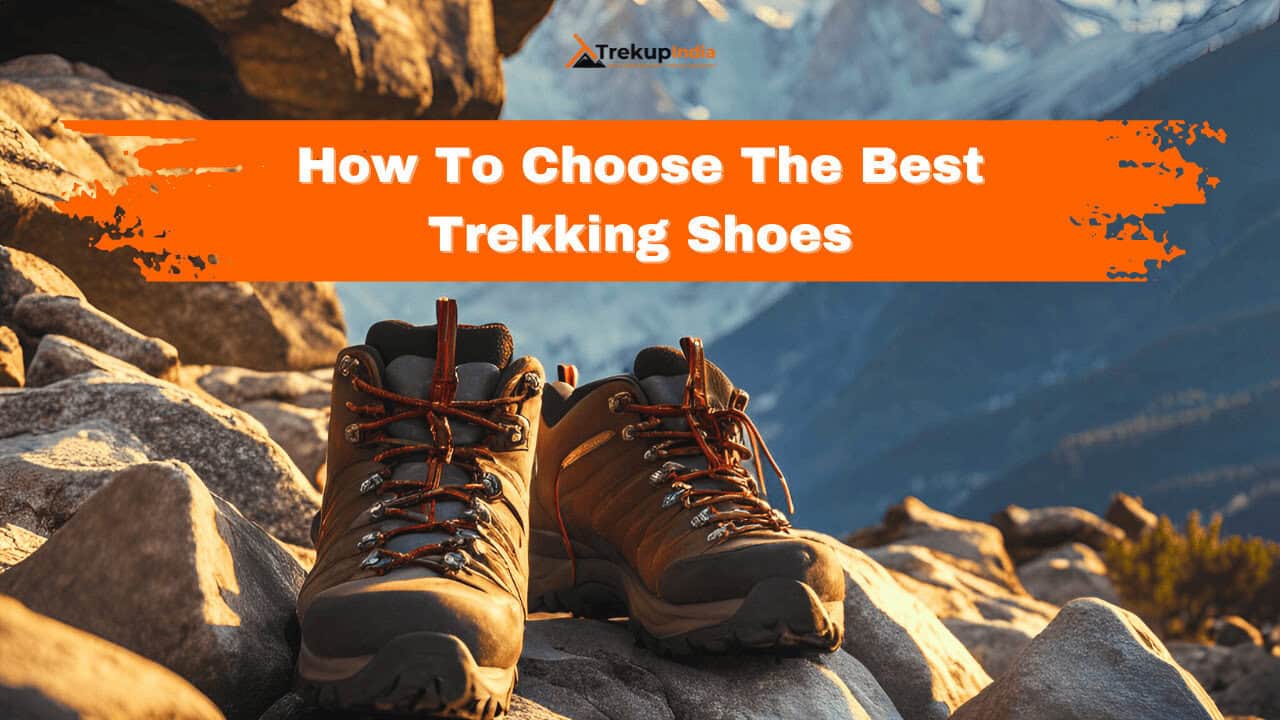
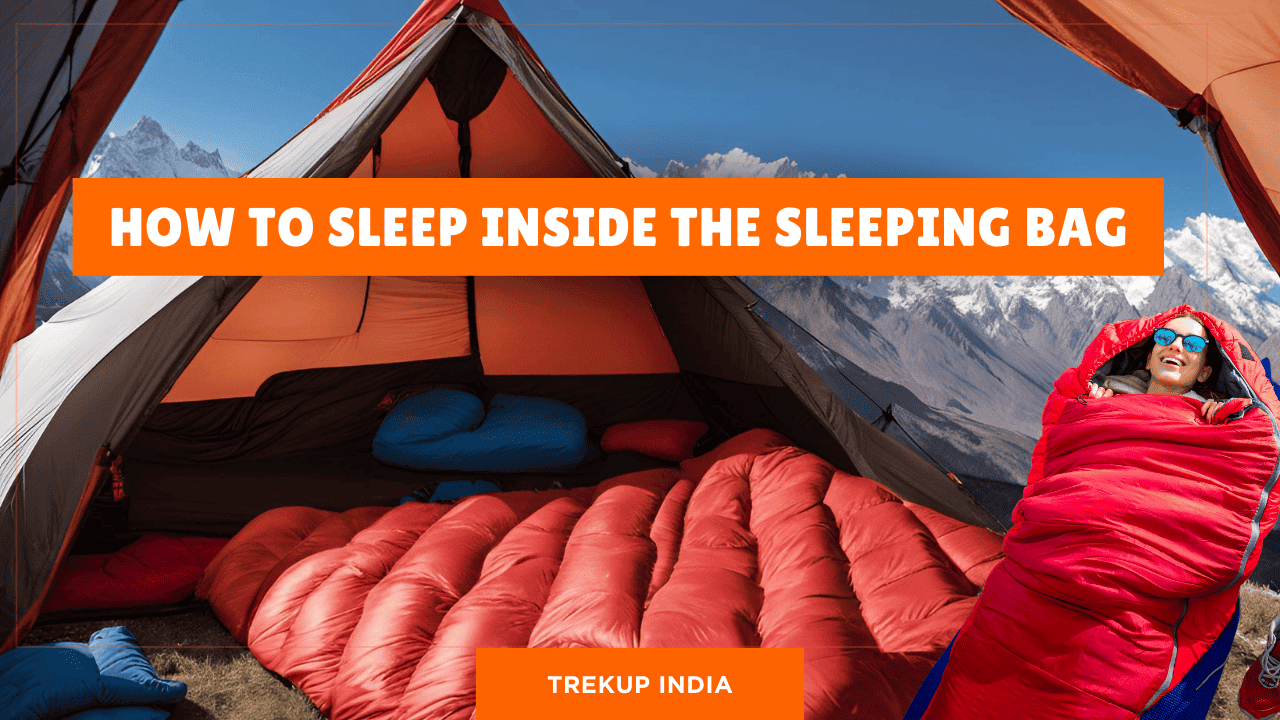
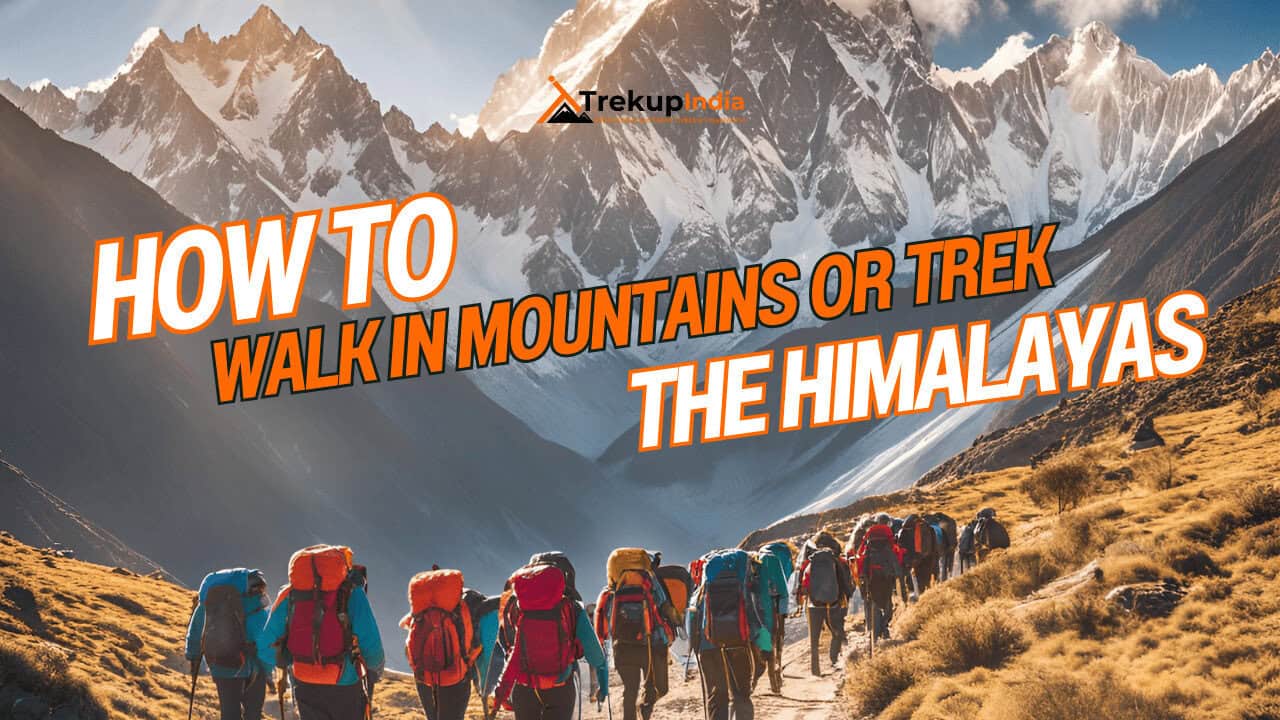
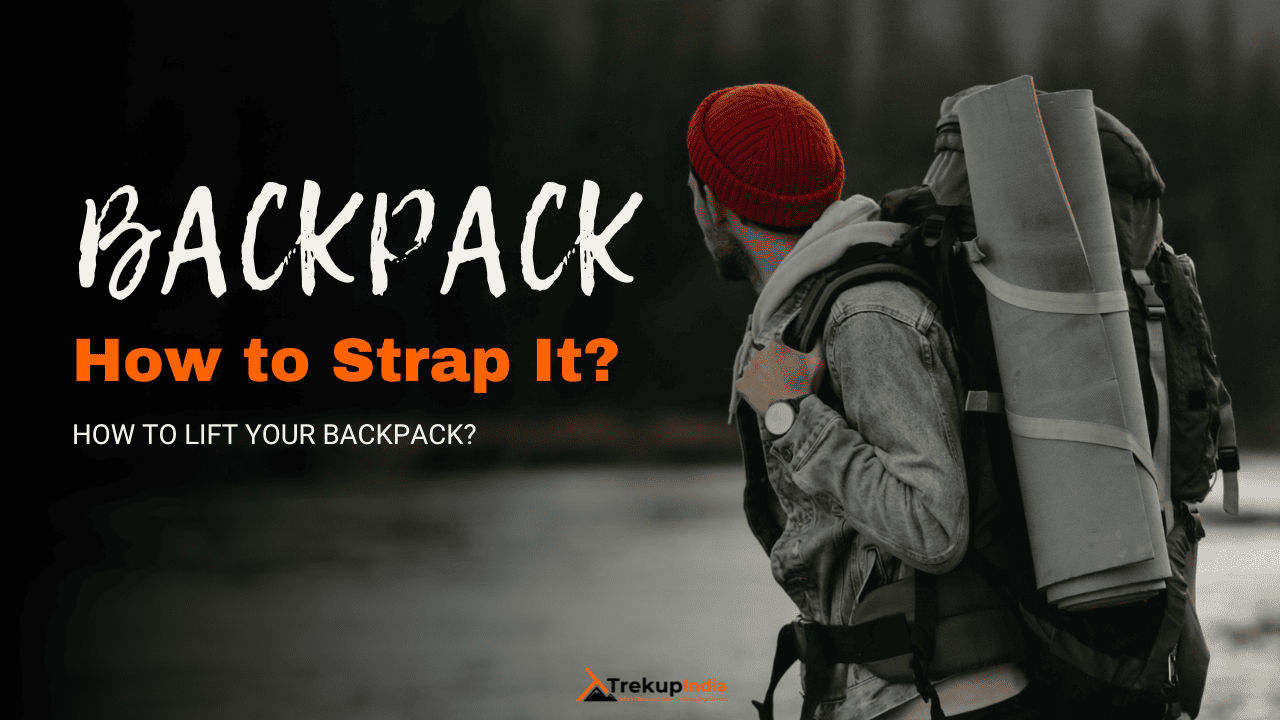
Know Everything About Acute Mountain Sickness
Acute Mountain Sickness occurs when people trek to high altitudes above 8,000 feet. This condition itself develops further due to reduced oxygen levels at such heights. Basically, as you go higher up, the air pressure and oxygen levels decrease, which causes the same problem. Acute Mountain Sickness surely causes headache, nausea, vomiting, and dizziness in affected persons. Moreover, peoples also experience difficulty in sleeping during this condition. To avoid mountain sickness, you should actually trek up slowly to higher altitudes. To learn further about this condition itself, watch the videos by Trekup India.
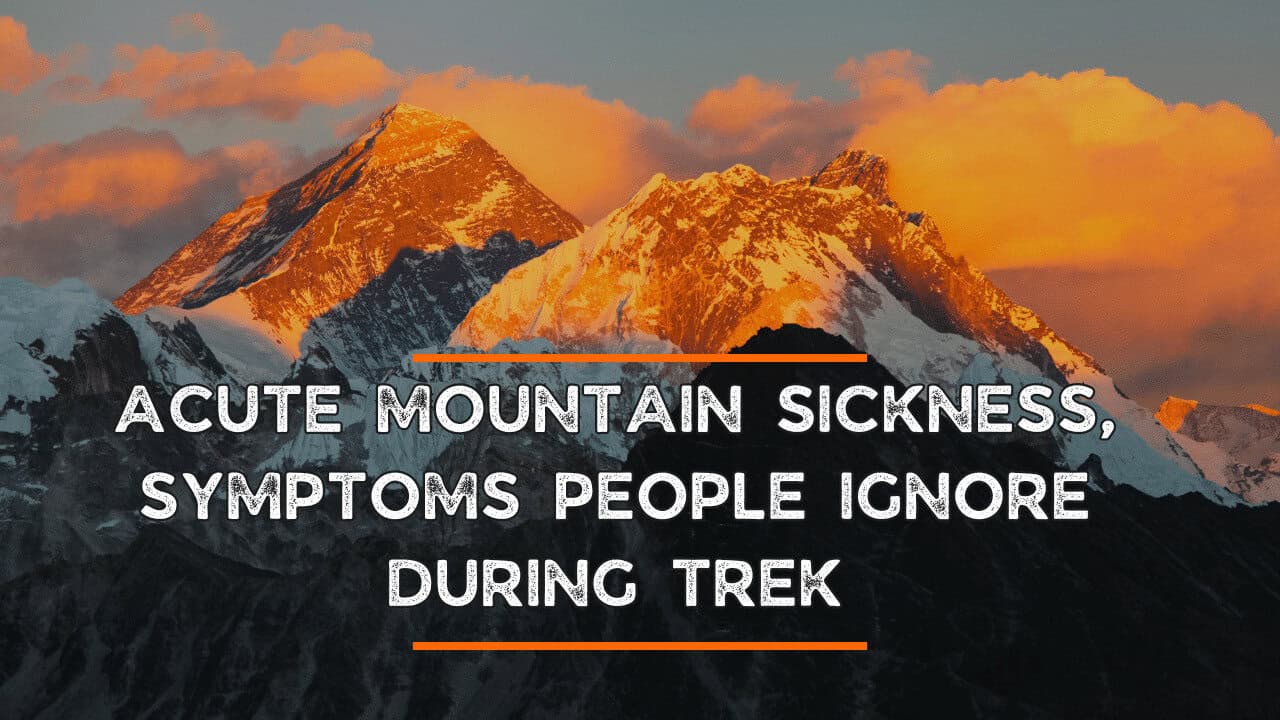
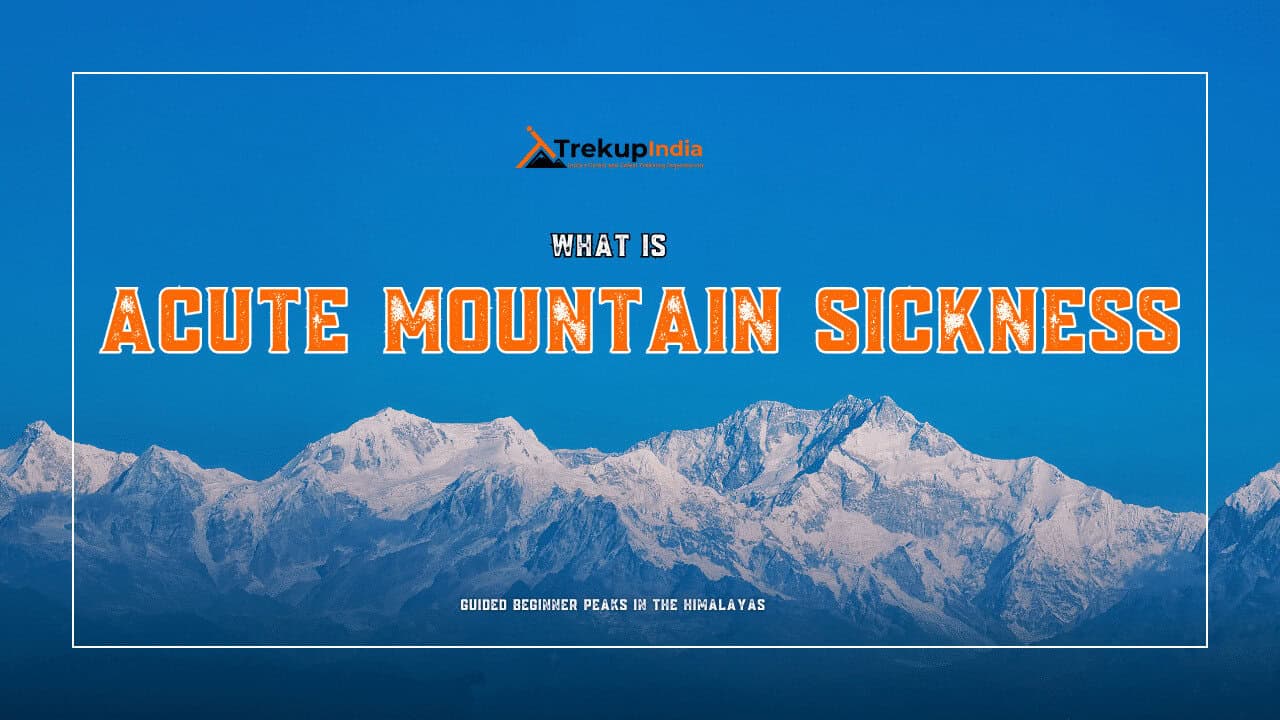
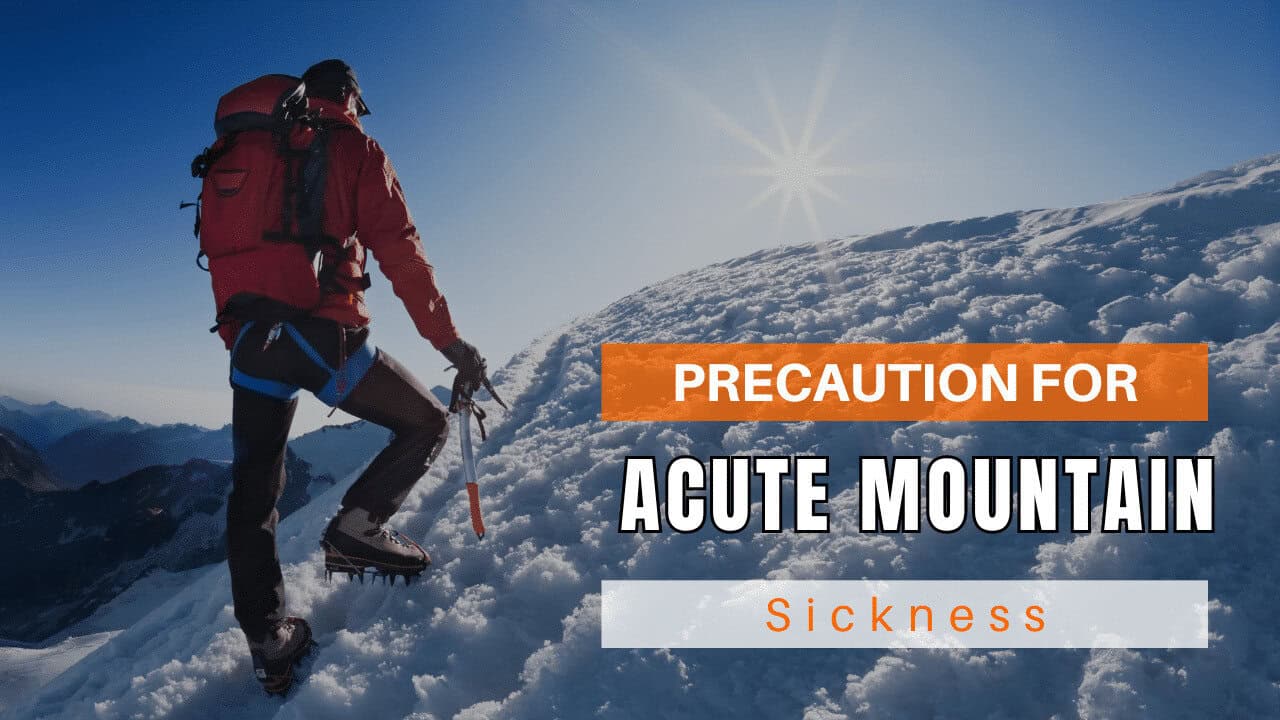
Day Wise Detailed Itinerary of Bali Pass Trek
Day 1: Dehradun to Sankri by Drive
- Drive Distance: 220 Kms
- Drive Duration: 10 Hrs
- The distance from Dehradun to Sankri is 220 km, which will take approximately 10 hours.
- The pick-up time is 6.30 a.m. From Prince Chowk, the Dehradun railway station parking lot is scheduled.
- Sankri is expected to arrive at 5:00 p.m.
- Remember to bring the original and a copy of your ID proof to Sankri’s forest checkpoint.
- JIO & BSNL network is available, but it may be erratic.
- Lunch and breakfast along the way are not included in the trek fee.
- After Pulora, keep a warm jacket handy.
- There is a local market available.
- Pulora has a fully functional last ATM.
- Dinner at the guest house.
- Accommodation at the guest house is Quad or Multiple occupancy.
Sankri is the first stop before you start your Bali pass trek. This is a small village in Uttarkashi, which lies within Govind Wildlife Sanctuary. You will pass scenic spots like those on the drive from Dehradun to Sankri: kempty waterfalls, Nainbagh, Mussoorie, etc. The peaks of Swargrohini and other Greater Himalayan summits surround it. The evening sky rises around Sankri, creating amazing scenes. This is a great way to get started on your trek. Here, you can stay at the Trekup India luxury hotel.
Day 2: Sankri to Dharkot Village by Drive & Trek From Dharkoat to Seema
- Altitude: 2,600m/8.500ft (Seema), and 2,100m/6.700ft(Taluka).
- Altitude Difference: 650m/2,100ft.
- Drive Distance: 16 Kms
- Drive Duration: 1.5 Hrs
- Trek Distance: 4 Kms
- Trek Duration: 3-4 Hrs
- Sankri to Dharkot drive 16kms, 1.30 hour.
- Dharkoat to Seema Trek 4 km, 3-4 Hours
- The majority of the trail is a gradual ascent.
- Take a walk along the Supin River.
- Trekking is done in the forest of Deodar, Bamboo, Wild Roses, Irises, and Chestnut.
- Water on the road.
- Osla village is located opposite Seema.
- Lunch packed on the way
- Tent-stay on twin sharing.
Get up early to start the morning drive to Taluka. This is where we start our trekking. You will cross major streams, bamboo, and deodar trees to reach the 12 km-long driveway. It is a joy to turn over many mountain bends. You can camp near Forest Rest House, and sometimes trekkers also camp there.
Begin your walk from Taluka by following a stone way descending to the river bed. From here, the path follows the Supin River. The path gradually ascends after crossing a couple of cement and wooden bridges. The path will open up to the left after about an hour. Many locals are busy at their jobs around here. They are happy to greet you. You can find stunning, undiscovered wooden architecture if you walk for 2 hours. This is Ghangad village. It takes another 20 minutes to reach the dhaba or water run mill.
Continue for an additional hour to reach another campsite currently under construction. A wooden bridge will take you to Osla village. Osla, with its unique wooden houses, is a trendy tourist destination. You walk for 60 minutes under forest cover beside the Supin River until you reach Seema. You will see Himalayan Monal if you open your eyes in the forest. Seema is a camping area, but you will find many trekkers there. You can stay in tents for the night and then relax.
Day 3: Seema to Rainbasera by Trek
- Altitude: 3,100m/10,200ft.
- Altitude difference: 500m/1,700ft.
- Trek Distance: 10 Kms
- Trek Duration: 6-7 Hrs
- Moderate to difficult ascents and descents
- You can see the confluence between Har Ki Dun’s and Ruinsara Rivers.
- A stunning view of Black Peak (Kalanag) from Debshu Bugyal
Walk along the Ruinsara river. - Mixed scenery of meadows, forests, and boulders
Water source sufficient. - Lunch packed for the day.
- Stay in a tent on twin sharing.
To reach Debshu Bugyal, our first significant spot, you must start from scratch. Begin by walking along the Supin River. The trail climbs and becomes steeper as you approach Debshu Bugyal. Once you reach Ruinsara Valley, you will encounter boulders along the route. Keep climbing to catch a glimpse of the famous Oslo village behind you.
Continue for another 30 minutes, and you will arrive at Debshu Bugyal. Take a break here, as the Bugyal is a vast two km-long pastureland, a rewarding sight after your uphill climb. The meadows offer a panoramic view of the surrounding landscape to the north and west of Kala Nag.
From here, the path descends abruptly until you reach the riverbed, which is slippery and filled with stones. You will need to cross another bridge at this point. Take a moment to admire the incredible sights all around you. The trail then climbs steeply from this point onwards. The next campsite, Rainbasera, has one small hut. The gushing river is a beautiful sight to behold in the evening. Many trekkers spend this peaceful moment next to the riverbed boulders.
Day 4: Rainbasera to Ruinsara Tal by Trek
- Altitude: 3,600m/11,800ft (Ruinsara Tal).
- Altitude difference: 500m/1,700ft.
- Trek Distance: 7 Kms
- Trek Duration: 4-5 Hrs
- Moderate ascent
- Meadows and rhododendron bushes surround Ruinsara Lake.
- Mixed trail of boulders and meadows.
- You can see the waterfall along the way.
- Water source sufficient.
- View from the camp site: Yamuna Kanta, Banderpooch Peak and Dhumdhar Kandi Black Peak. (Kala Nag).
- Lunch on the road and light lunch on-site
- Camping close to the lake.
It’s an exciting day, as Ruinsara Lake is our next camping ground. It will be a similar trail to the one you saw yesterday. Continue walking for about 3-4 hours to reach the water body. The lake can be accessed by crossing streams, walking and other adventures. Camping today is a true dream. It is between Ruinsara Lake and Supin River, surrounded by meadows dotted by substantial snow-capped mountains. The stunning Bandarpoonch range peaks like Kala Nag, Bandarpoonch and Dhumdhar Khai dominate the sky. Here, you will also find a temple. You can walk around the area and take in the sights.
Day 05: Ruinsara Tal to Odari by Trek
- Altitude: 4,000m/13,100ft.
- Altitude difference: 400m/1,300ft.
- Trek Distance: 4 Kms
- Trek Duration: 3-4 Hrs
- Peaks: Swargarohini.
- Steep, gradual mixed ascent
- Water source is limited
- River crossing through making a human chain.
- Odari is a natural-made rock cave.
- It is believed that Bali (Hanuman’s brother) stayed for one night in Odari.
- Hot lunch on the camp site.
Today’s walk will only take you 4km. It descends towards the Supin river. You will pass through forests and cross rivers. The path climbs again before reaching the next meadow. The higher peaks can be seen from the meadows. This is a preview of the things you have seen in the last few days. Surprisingly the vegetation becomes sparser in the future. Odari is within a kilometre. Near the campsite is a rock cave. Odari, which is a cave, was given the name. This cave is believed to have been the home of Bali, the brother of Lord Krishna. You can also see Swargrohini 1 and 2 clearly from this cave. Trek Leader will offer some training sessions after lunch that will help you as you climb higher.
Day 06: Odari to Bali Col Camp Trek
- Altitude: 4,600m/15,100ft.
- Altitude difference: 600m/2,000ft.
- Trek Distance: 5 Kms
- Trek Duration: 6-7 Hrs
- Technical ascent and steep.
- Walk on a mountain ridge.
- There is no water source.
- Lunch on the route and lunch at camp.
Although it seems like a shorter day, it isn’t easy. It will be a steep climb up a 60-degree inclined path. This is a ridge walk with loose rocks and scree. It is also tricky because of the scattered stones along the trail. You should get enough sleep and water. It would help if you took the necessary precautions to avoid severe complications from height gain. Nighttime temperatures tend to drop below zero degrees. Prepare for the cold. You can rest in tents after a long day.
Day 07: Bali Col Camp to Lower Dhamni via Bali Pass Trek
- Altitude: Bali Pass 4,950m/16.200ft, Lowar Dhamni 3400m/11.100ft
- Altitude difference: 1,200m/4,000ft.
- Trek Distance: 14 Kms
- Trek Duration: 10-11 Hrs
- A steep and technical ascent for approximately 1-1.5 hours to reach the Pass.
- Summit View: Bandarpoonch (Black Peak), Kalanag (Black Peak), Ruinsara, Yamuntori, and Ruinsara side. This is the logical route to Saptarishikund.
- Half of the trek begins after reaching Bali Pass.
- Because the path after the pass can be confusing, it is important to stay with a Trek Leader or Guide.
- Lunch packed on the way
- Bring enough water to your camp site (Bali col).
This can be considered the summit day. Today, you’ll cross the Bali Pass to reach Lower Dhamni. You will need to eat enough for the long day. The path to Bali Pass is steep and covered in snow. Follow the route marked by your guides. You don’t need to rope up, but you can wear microspikes if necessary. The pass’s summit is reached after a steep climb lasting between 2 and 3 hours. It is just 10 feet wide by 30 feet wide. This is the highest point where you can feel like you are on top of a mountain. Enjoy the 360-degree views of Swargarohini and Banderpooch peaks. The Yamnotri Valley is visible to the right. Enjoy the view and take in the moment. Keep your eyes open for the descent, as the real thrill begins now.
You will climb down almost to 90 degrees, following a narrow path. Follow your guide and use proper techniques. The path from the lower Dhamni to the upper Dhamni is very difficult, so take care. You may find it difficult due to the snow. Rest at Upper Dhamni after this difficult part. You will find the path from your leg to Dhamni, which needs to be clarified. Follow your guide and make sure you are in a group. After some rest, we will begin our trek to Lower Dhamni. Sticking with your leader and team is recommended, as the path can be confusing. From here, the trail will be flattened and easily visible. It runs for about 2 km through the forest. You can rest in your tents. You will be able to stay there for a long time.
Day 08: Lower Dhamni - Jaan ki Chatti by Trek & Drive to Dehradun
- Altitude: 2,600m/8,500ft. (Jaan ki Chatti)
- Altitude difference: 800m/2600ft.
- Trek Distance: 8 Kms
- Trek Duration: 4-5 Hrs
- Drive Distance: 170 Kms
- Drive Duration: 7 Hrs
- A well-defined and easy trail.
- Water source sufficient.
- Packed Lunch for the Trek
- In a Tata Sumo, or another similar vehicle, you will be dropped off at Dehradun station.
- Drop to Dehradun is included in the price
- Lunch on the Way (Not Included in the Cost).
- Due to heavy traffic, driving time to Dehradun could increase. Book your tickets after 10 P.M. from Dehradun.
It is the last day of the trek. This day will be the easiest, with a lot more descends than ascends. It is a cement-paved pathway. The climb up to Yamunotri takes another 1-2 hours. To reach Dehradun before 10 P.M, leave early from your campsite.
Bali Pass Trek Route Map
We’ve prepared a comprehensive Trek Route Map for your upcoming adventure to Bali Pass Trek, which outlines the entire journey including all stops and trails. This map provides detailed information on the terrain, distance between points of interest, and estimated travel time to help ensure a safe and enjoyable trek. We’ve carefully curated the map to ensure that you have all the necessary information at your fingertips. Please take a moment to review it thoroughly, and don’t hesitate to reach out if you have any questions or concerns.
Bali Pass Trek Altitude Chart
The Trek Altitude Chart is a useful tool for Trekkers to monitor their altitude changes during their rides, allowing them to plan their routes more efficiently and track their progress over time. This Bali Pass Altitude chart is beneficial for both casual and experienced Trekkers, helping them make the most out of their trek experience.
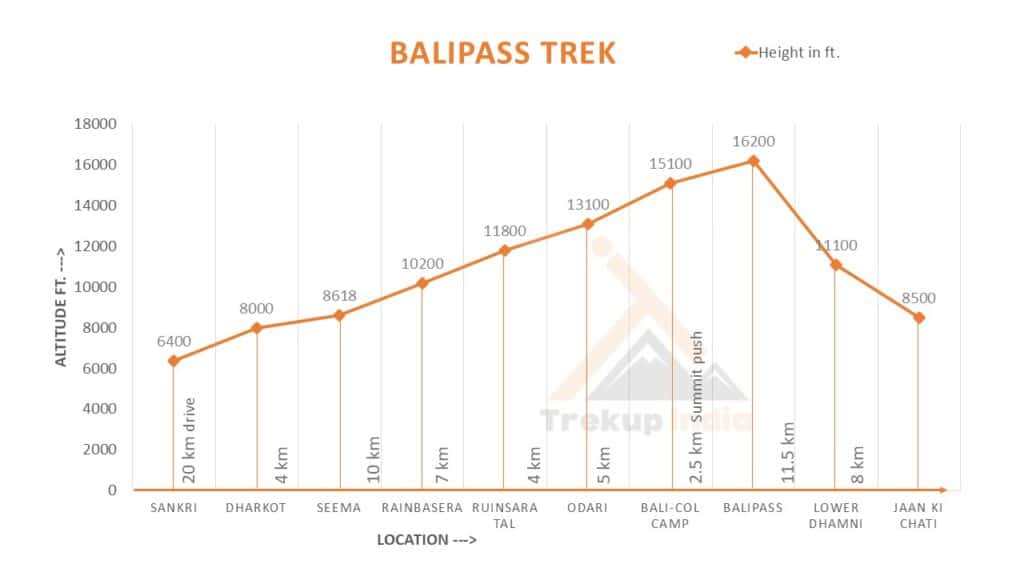
What should you pack for the Bali Pass Trek
Bali Pass Trek is a high-altitude trek. The trekking gear you have to have for this particular trek differs from normal treks. Thus, read this whole segment. There is an important question that the trekker who is doing trek asks, like what all things to carry while trekking. Below, we have provided the details on everything you should take; an easy way to remember is by Head to foot or foot to head. We have prepared from Head to foot.
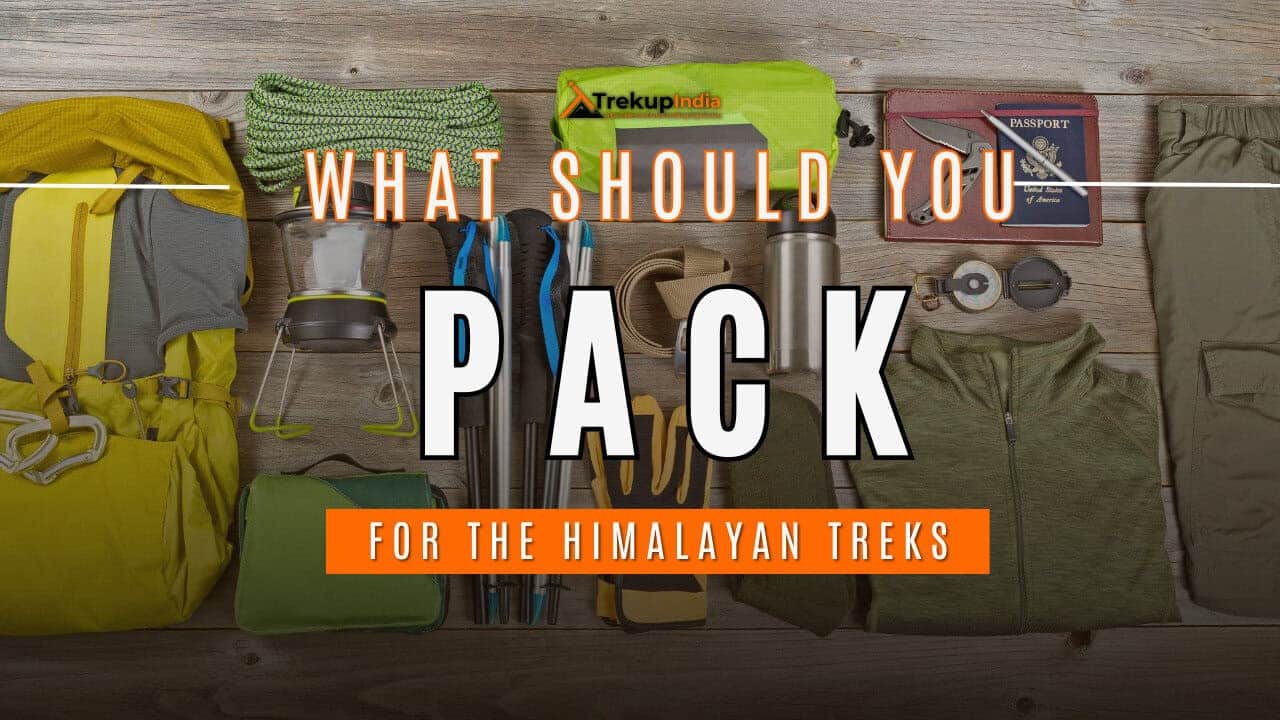
Head Gears
When trekking it's important to carry headgear to protect your head and face.
Heading out for a trek? Don’t forget to carry headgear to protect your beautiful face and head from the sun, wind, and dust! It’s an essential accessory that keeps you safe and comfortable throughout your adventurous journey. So, make sure you pack it before you step out into nature!
- Head Lamps – When trekking at night, headlamps are essential to illuminate your path while keeping your hands free. Headlamps come in different sizes and lumens, so it is essential to choose one that suits your needs.
- Hats or Cap – Caps or hats are also necessary when trekking in different weather conditions. Caps protect your head from the wind and freezing temperatures at night, while hats provide shade and protection from the sun during the day. It’s essential to ensure that your hat has a strap to prevent it from being blown away by the wind.
- Sunglasses – Sunglasses are also essential for trekking. Your sunglasses should protect your eyes from harmful UV rays and fit your face perfectly to avoid falling off while climbing, jumping, or crossing obstacles. The glass of your sunglasses should also be designed for different weather conditions to provide optimal visibility.
- Buff / Balaclava – Lastly, a buff or balaclava is a must-have to protect your mouth or neck from extreme temperatures and keep them warm. Buffs and balaclavas come in different materials, thicknesses, and designs, so it’s important to choose one that suits your needs and preferences. Depending on the weather conditions and your activities, you can wear them as neck warmers, face masks, or headbands.
Clothes
When trekking in high altitudes, prepare for cold weather by wearing layers. Layering traps heat, keeps you warm, and allows you to easily adjust your clothing as temperatures fluctuate.
Layering is important for different seasons when trekking. When planning a high-altitude trek, it is important to prepare for the cold weather. Wearing layers is the best approach as it provides both protection and flexibility when the weather changes frequently in the mountains. Layering helps to trap heat and keep your body warm, while at the same time allowing you to easily adjust your clothing as the temperature fluctuates. By wearing layers, you can enjoy your trek comfortably and stay safe in the unpredictable mountain weather
- For spring, summer, and monsoon treks, consider wearing three layers: a woollen sweater, a fleece, and a padded jacket.
- For autumn treks, add one more fleece layer to make it four layers.
- For winter treks, you may need five layers with thermals, a woollen sweater, two fleeces, and a padded jacket.
- T-shirt/sleeve shirt– Bring three T-shirts and two quick-dry trek pants, wearing one and carrying the others. Long sleeve shirts help to protect from sun UV rays. We recommend synthetic T-shirts as they get dry quickly when they get wet.
- Hiking / Trekking Jacket– down jackets (-5 to-10 C) or two-three-layer jackets.
- Thermals– at least two pairs of thermals help keep the body warm during cold weather.
- Undergarments– you can carry them according to your habitual and hygiene requirements.
- Gloves– 1 pair of gloves will keep your hand warm and nice.
- Trek Pants– Bring 2 to 3 comfortable trekking pants. Trekking pants play a significant role, as they are designed for comfort and mobility, making trekking easier. It should be Synthetic so that it gets dry quickly when wet.
- Rain Wear– you can carry a raincoat or Poncho. During long rains and snowfalls, the waterproof jackets start leaking. Still, the Poncho and raincoats keep you dry, so choose accordingly.
Tip: If you choose a raincoat on your trek, carry a small waterproof cover so things inside your backpack can’t get wet. If you carry a Poncho, you don’t need to worry. It protects both you and your backpack.
Foot Gears
When it comes to planning a trek, one of the most important aspects is to ensure that you have the right kind of foot gear.
- Trekking shoes which are waterproof and have ankle support. Walking / Hiking sandals which can be used off the trek, i.e., in the morning and evening hours when you reach the campsite, basically to get your feet rest from heavy boots, sometimes used for crossing streams and rivers, it’s more comfortable and safer than crossing barefoot or wetting your shoes. Sneakers (Optional) can be worn for normal driving days or used around the camp.
- Socks– you should at least carry 3 to 4 pairs.
- Microspikes & Gaitorswill be provided by Trekup India when required. You don’t have to carry them.
Personal First Aid Kit
Don't forget to pack your personal first aid kit! It's always better to be safe. So, make sure you're prepared for any unforeseen circumstances.
Below are some common medicines generally required/used during your adventure trip; however, please consult your doctors prior.
- Antiseptic towel or water syringe (to clean the wound)
- Butterfly bandage for a small cut
- Cotton and elastic bandages and sterile gauze pad for larger wounds
- Latex gloves are used when the wound bleeds.
- Medicine for Diarrhea (Upset stomach)
- Medicine for cold, flue/fever, headache
- Some pain killers
- ORS pouches
- Quick pain relief spray (External use)
- Any personal medicine prescribed by your doctor
- Dimox / Similar for high altitude sickness
- Bug Repellent
- Carry some nutria/energy bars and drinks (non-alcoholic)
- Note: Kindly consult your doctor before purchasing or taking any medicine.
Gadgets and Other Items
You might also consider bringing a camera, binoculars, portable charger, and snacks. Be well-prepared and tackle any trail with confidence.
- Trekking Poles
- Mobile phone
- Camera
- Spare batteries for phone and camera, power bank
- Lightweight flashlight or headlight
- A waterproof bag made of plastic is used for the camera.
- Plug/converter for electrical items
- 1-litre water bottle
- A journal with a pen would be a good idea to keep your notes.
- Some book of your interest for the ideal time
- Get into the habit of maintaining a Map and guidebook of the region.
Hygiene & Personal toiletry
Remember to pack hygiene and personal toiletry items such as soap, shampoo, toothbrush, toothpaste, deodorant, and toilet paper.
- Sunscreen with UV protection to shield your skin from harmful rays
- 1 or 2 small quick-drying towels to help you dry off quickly in case of rain or sweat
- Toilet paper, tissues or wet wipes for maintaining hygiene while on the trek
- Toothbrush, toothpaste, and mouth freshener to keep your mouth clean and fresh throughout the journey
- Deodorant or talcum powder to help you stay fresh and odor-free, especially during hot and humid climates
- Shampoo to keep your hair clean and healthy
- Sanitary pads or tampons (for female trekkers) to manage menstrual cycles
- Lip-gloss or salve to protect your lips from dryness and chapping
- Bio-degradable soap to keep yourself clean and hygienic while on the trek
- Nail clipper and other personal items that you use daily
Compulsory Documents to Carry
There are certain documents that you should always carry with you. These documents are not only necessary for your safety and security, but they may also be required by local authorities.
These files must be submitted to the Forest Department before your trek. With none of these, you will not be permitted to trek—original and photocopy of government photo identity card. Carry IDs like Aadhaar, voter ID, etc.
How To Plan Your Trek & Reach Dehradun?
To reach Dehradun, you have several transportation options:
By Air: The nearest airport is Jolly Grant Airport, located about 25km from the city. Regular flights from Delhi to Dehradun are available. If you plan to fly, arriving one day in advance is best.
By Train: If you prefer to travel by train from Delhi, two convenient options are the Nandadevi Express (Train no: 12205), departing at 11:50 pm and arriving at 5:40 am, and the Dehradun Express (Train no: 12687), leaving at 9:10 pm and arriving at 5:00 am. Both provide an overnight journey.
By Bus: Regular bus services to Dehradun are available from Delhi at ISBT Kashmere Gate. It’s recommended that government buses be taken from this station. Upon arrival at Dehradun ISBT, our staff will pick you up from the Dehradun Railway Station. A vehicle will be available to pick you up from the station at 6:00 am, and you are expected to reach Sankri by 4:00 pm.
Fitness Required & Preparation Guide For Bali Pass Trek
If you’re preparing for a Bali Pass Trek, Trekup India recommends jogging as part of your fitness routine. Jogging helps work out the same muscle groups that you’ll use during trekking and can help you build endurance. You don’t need any special equipment to get started.
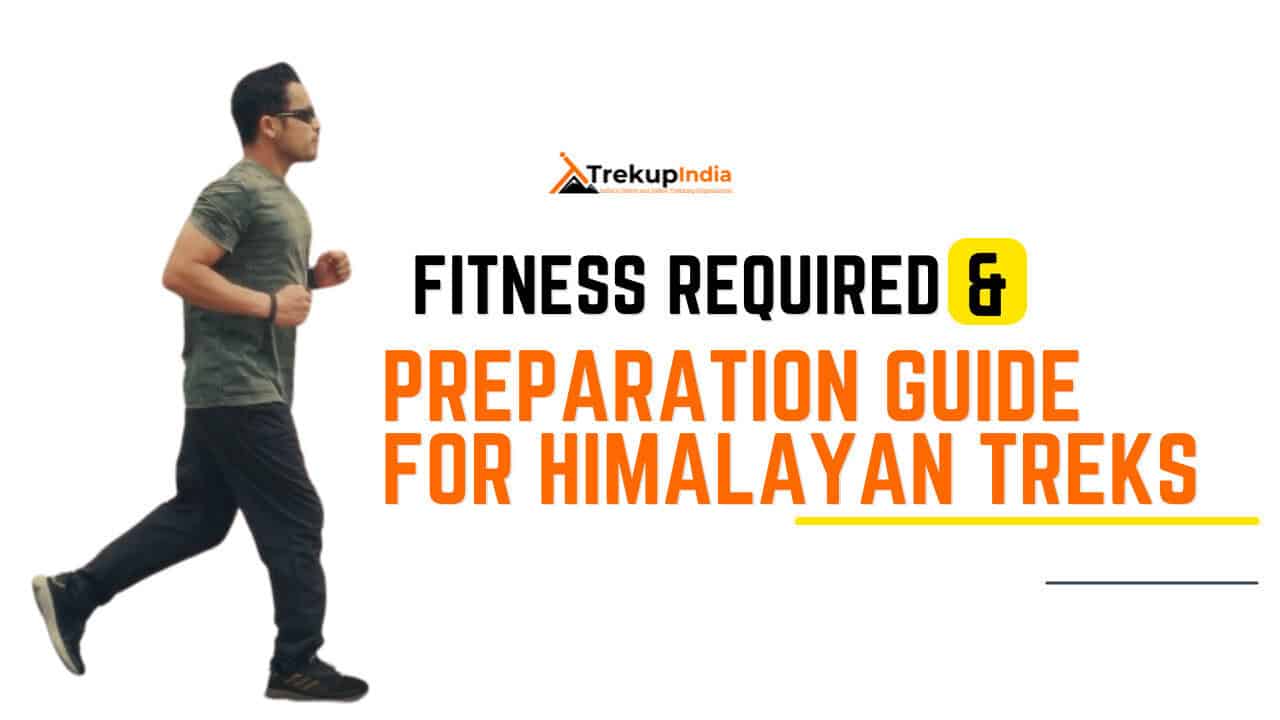
Fitness Target
Trekup India has put the Bali Pass Trek into an Difficult grade-level trek.
For Difficult – Challenging Treks – In order to be well-prepared for your upcoming trek, it is recommended that you focus on building your endurance by aiming to cover a distance of 5.5 kilometers in less than 45 minutes. This will help you to develop the necessary stamina and strength required to successfully complete your journey.
How to Achieve This Fitness Target?
To start preparing for your trek:
- Try jogging for at least five days every week.
- If you find 5 km too difficult at first, begin with 2 km and gradually increase over 2-3 weeks.
- Once you feel more comfortable running 5 km, focus on improving your speed gradually on a daily basis.
It is important to ensure that you can consistently complete 4.5 km in under 40 minutes for at least two weeks before your planned trek. Allow yourself 6-8 weeks to prepare physically for the journey.
Strength Training exercises that benefit Trekking
Trekking is an activity that demands a good level of strength.

Trekking is a demanding activity that requires good cardiovascular endurance, muscular strength, and overall fitness. To help you prepare for your trek, incorporating bodyweight exercises into your training routine can be an effective way to build strength, improve stability, and enhance endurance, all of which are crucial for a successful trek. In this regard, here’s a breakdown of body weight exercises categorized by the specific body parts they target and the benefits they offer during trekking.
1. Lower Body Exercises
Lower body exercises like squats and lunges are great for building lower body strength, essential for trekking.
a. Squats
Squats are an excellent exercise for building lower body strength, essential for trekking. They target the quadriceps, hamstrings, glutes, and calves. Solid quadriceps and glutes provide power for ascending and tackling uphill climbs, while vital hamstrings aid stability during descents. This is particularly helpful in navigating uneven terrain during trekking.
How to perform Squats Exercises:
- Stand with feet shoulder-width apart, toes pointing slightly outward.
- Lower your body by bending your knees and hips, keeping your back straight.
- Lower until your thighs are parallel to the ground or as low as comfortable.
- Push through your heels to return to the starting position.
b. Lunges
Lunges target the quadriceps, hamstrings, glutes, and calves. They improve lower body strength, balance, and stability, crucial for maintaining control on rocky trails and steep slopes. Additionally, they enhance flexibility, reducing the risk of injury while trekking.
How to Perform Lunge Exercises:
- Stand with feet hip-width apart, hands on hips or sides.
- Take a step forward with one foot, lowering your body until both knees are bent at 90-degree angles.
- Push through the heel of your front foot to return to the starting position.
- Repeat on the other side, alternating legs.
2. Upper Body Exercises
Upper body exercises such as push-ups and pull-ups effectively strengthen the upper body, especially the chest and shoulders, which are essential for carrying a backpack during treks.
a. Push-Ups
Targets: Chest, shoulders, triceps, and core.
Benefits for Trekking: Push-ups are an effective exercise to strengthen the upper body, especially the chest and shoulders, essential for carrying a backpack during treks. Improved upper body strength will also help maintain posture and stability while traversing challenging terrain.
How to Perform Push-Ups Exercises:
- Start in a plank position with hands shoulder-width apart and body in a straight line from head to heels.
- Lower your body by bending your elbows until your chest nearly touches the ground.
- Push through your palms to return to the starting position.
- Keep your core engaged throughout the movement.
b. Pull-Ups/Bodyweight Rows:
Targeting the back, biceps, and shoulders can significantly benefit trekking. You can strengthen these muscle groups by performing pull-ups or bodyweight rows and improve your posture and balance while carrying a backpack. Additionally, more muscular back muscles can help reduce the risk of back strain and fatigue during long treks, making your journey safer and more comfortable.
3. Core Exercises
Core exercises like planks and Russian twists can help strengthen the core muscles, which are crucial for maintaining stability and balance while trekking on uneven terrain.
a. Planks
Targets: Abdominals, obliques, and lower back.
Benefits for Trekking: Planks are an effective exercise that helps strengthen the core muscles. These muscles are crucial for maintaining stability and balance while trekking on uneven terrain. A strong core also helps improve posture, reducing the risk of back pain and fatigue during extended hikes.
How to Perform Planks Exercises:
- Start in a plank position with elbows directly under shoulders and body in a straight line from head to heels.
- Engage your core and hold the position, avoiding sagging or arching the back.
- Keep breathing steadily and hold for the desired duration.
b. Russian Twists
Targets: Obliques, abdominals, and lower back.
Benefits for Trekking: Russian twists engage the core muscles, particularly the obliques, improving rotational stability and balance. Enhanced core strength helps prevent injuries and improves overall performance during trekking.
How to Perform Russian Twist Exercises:
- Sit on the ground with knees bent and feet flat, leaning back slightly to engage the core.
- Clasp hands together and twist the torso to one side, bringing the hands towards the ground beside the hip.
- Return to the centre, then twist to the other side.
- Continue alternating sides for the desired number of repetitions.
4. Full Body/Cardiovascular Exercises
Full-body/cardiovascular exercises like burpees and mountain climbers are excellent for improving cardiovascular endurance, strength, and agility.
a.Burpees
Burpees are an excellent full-body exercise that targets your legs, chest, arms, and core. This exercise dramatically benefits trekking enthusiasts, improving cardiovascular endurance, strength, and agility. Regularly incorporating burpees into your workout routine can enhance your overall fitness level, which can help you endure long hikes and rugged terrains with ease.
How to Perform Burpees Exercises:
- Start in a standing position.
- Squat down and place hands on the ground.
- Jump feet back into a plank position.
- Perform a push-up.
- Jump feet back to the squat position.
- Explosively jump up into the air, reaching overhead.
- Land softly and repeat the sequence.
b. Mountain Climbers
Mountain climbers target the core, shoulders, chest, and legs. This dynamic, full-body exercise can significantly improve cardiovascular endurance and agility. It is an excellent functional workout for trekking preparation as it engages both the upper and lower body muscles while strengthening the core muscles.
How to Perform Mountain Climbers Exercises:
- Start in a plank position with hands shoulder-width apart and body in a straight line from head to heels.
- Drive one knee towards the chest, then quickly switch legs, alternating in a running motion.
- Keep the core engaged and the hips stable throughout the movement.
- Continue at a moderate to fast pace for the desired duration.
Incorporating bodyweight exercises into your training routine can help you build strength and endurance and prepare your body for the physical demands of trekking. Consistency and proper form are crucial to maximizing the benefits of these exercises and ensuring a safe and enjoyable trekking experience. Engaging your core muscles, including obliques, abdominals, and lower back, with Russian twists can improve your rotational stability and balance, preventing injuries and enhancing overall performance during trekking.
When incorporating strength training exercises into your workout routine, it’s essential to maintain proper form and technique to avoid injury. Start with lighter weights and gradually increase the intensity as you progress, focusing on compound exercises targeting multiple muscle groups simultaneously. Some examples of practical strength training exercises for trekking include squats, lunges, deadlifts, and pull-ups.
Remember to give your muscles time to recover between workouts, and remember to stretch before and after your workouts to prevent injury and improve flexibility. Combining strength training with jogging and proper stretching allows you to take your fitness to the next level and confidently tackle even the most challenging treks.
Our Trekkers Reviews And Expreinces
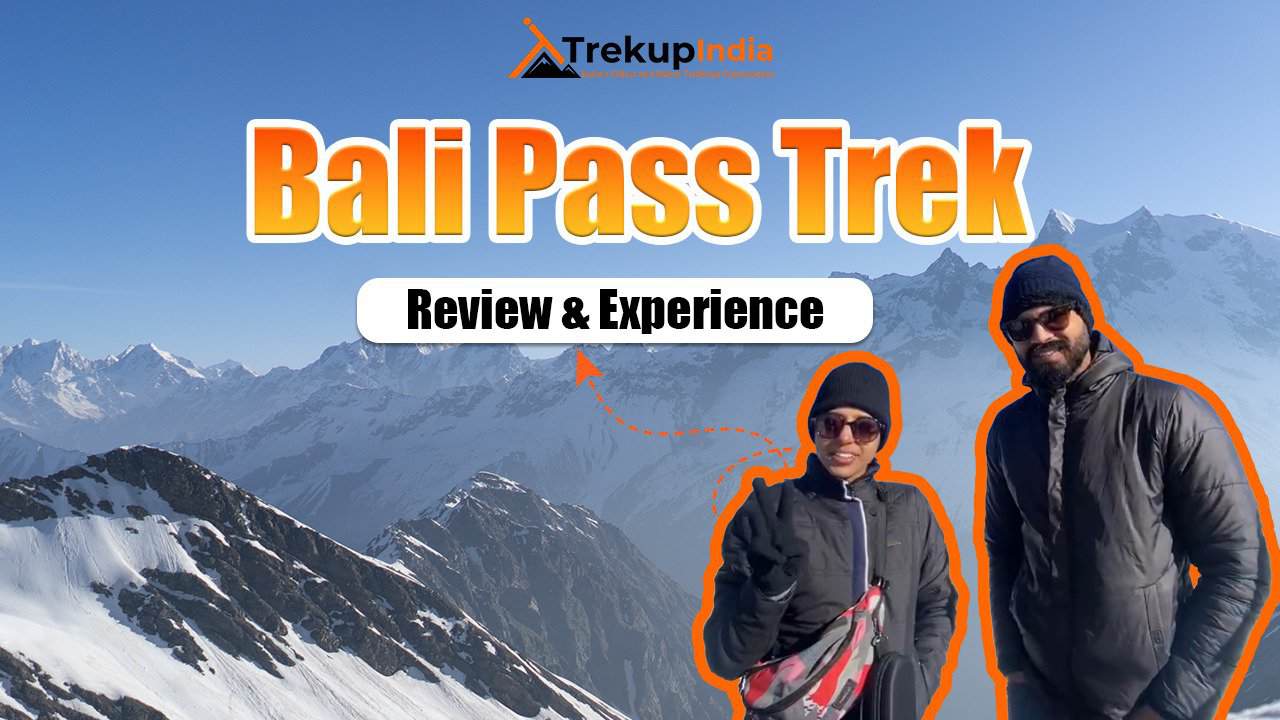
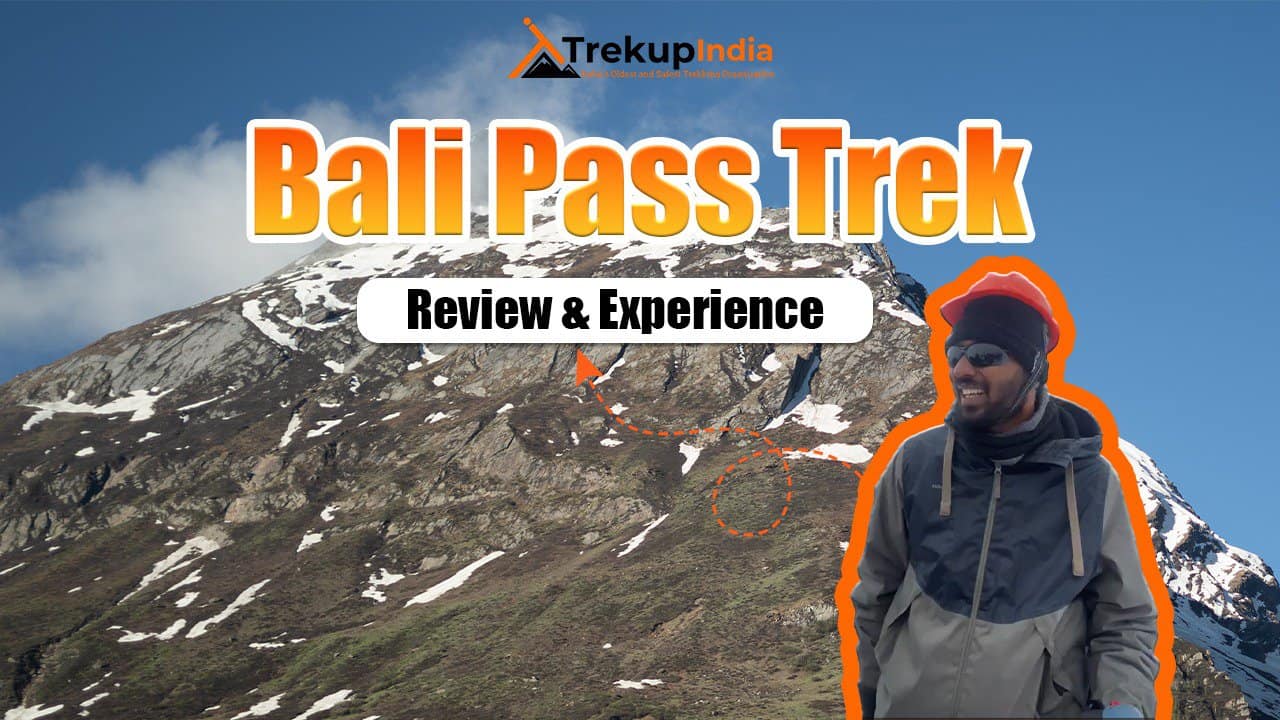
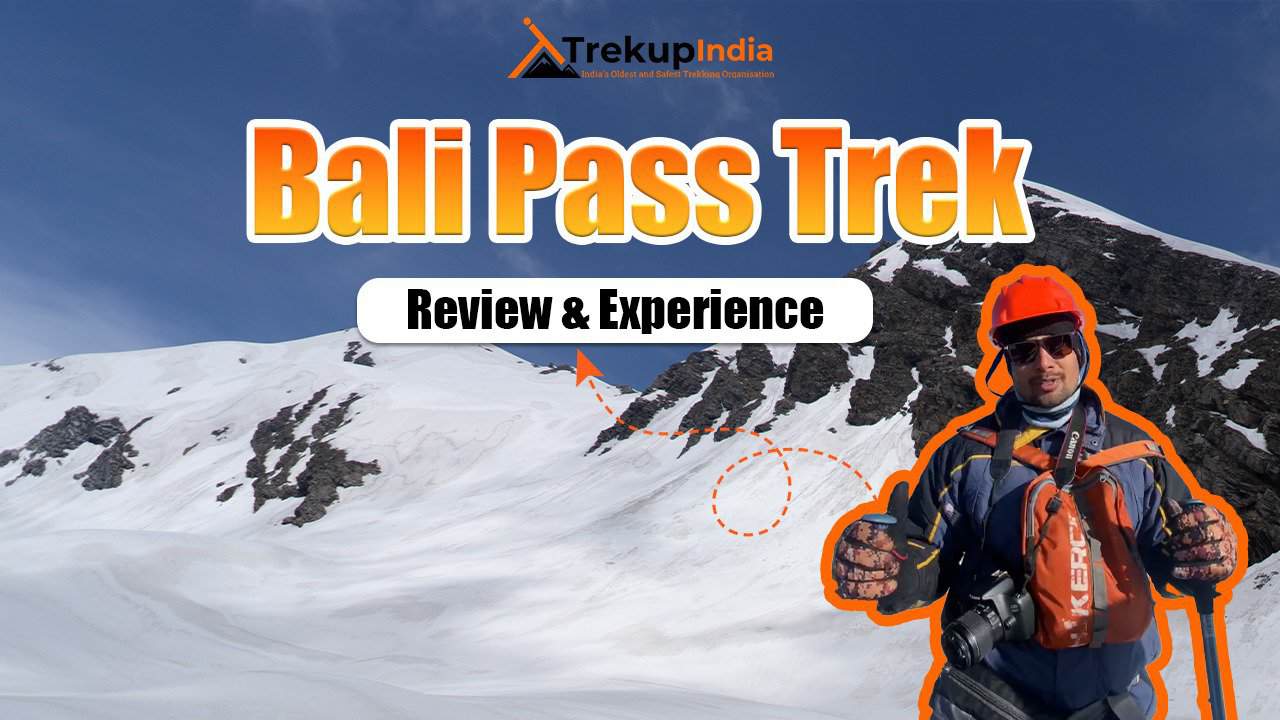




Food Provided by Us During Trek
We provide only Indian vegetarian food, and your meal will mainly consist of Indian bread, vegetables, lentils, rice, and a delicious dessert. During your trek, we will serve three meals a day, including breakfast, lunch, and dinner. You will also be served tea, snacks, and lip-smacking soup in the evening before dinner. If it is a long day of trekking, you will be given a packed snack.
After extensive research on the trekkers’ nutritional requirements, we prepare the menu. Before putting all the meals together, we also consider the altitude and the weather.
The meal we serve during the trek is perfectly balanced with calories, carbohydrates, vitamins, protein, fibre, and minerals. You need to know that all our cooks have great expertise in cooking and have undergone thorough training. So, get ready to enjoy delectable and lip-smacking dishes during your trek. You will be served with lemon tea in the tent to start your day with a refreshed feeling. Before leaving the campsite for trekking, you will be given a hot finger-licking breakfast like upma, Aallu Prantha, Besan Chilla, Poha, Daliya, Corn flakes, and Maggie, along with tea or coffee.
If your trek is longer, we also offer some fresh local fruits such as apples and healthy drinks like Frootie or Maaza. In the afternoon, you will be served a simple & healthy lunch, while at around 04:00 pm, you will be given tea and a light evening breakfast. After you reach your campsite at night, you will be served a hot and delightful dinner.
After reading this, you must have understood the food we provided on the trek; you don’t need to worry about food. Many trekkers repeatedly trek with us because of the food we provide. Thus, we will give you unforgettable experiences.
Safety During Bali Pass Trek
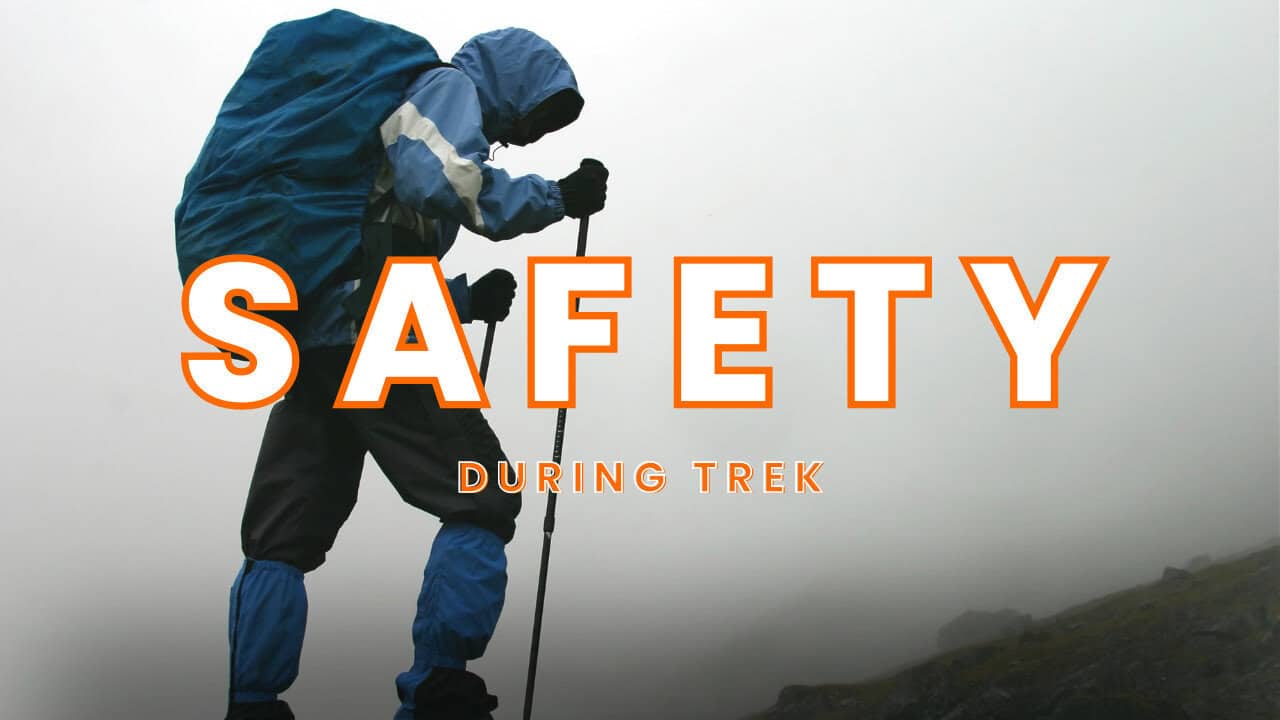
Trekking with us for the Bali Pass Trek is entirely safe because we have a team of trek leaders qualified in Wilderness first-aid and complete information about the high-altitude glitches. During the trek, we carry a full first-aid kit that contains all the essential medicines. Before trekking with us, you must ensure that you are medically fit for the trek; for us, your medical fitness is more important than anything else.
Right from our establishment, we at Trekup India have been continuously introducing new safety practices into Indian trekking to ensure the safety of voyagers. Trekup India introduced microspikes and made emergency bottled oxygen mandatory for all treks. Our trek leaders take your daily Pulse oximeter reading. We at Trekup India introduced the radio walkie-talkie as a safety communication device.
How can we ensure that your trek is safe with us?
We have noticed that most trek-organizing organizations do not follow these systems, but with time, they are following us; several competing companies are adopting these practices and organizing great, safe treks.
We ensure complete technical safety in the mountain. Our company has a vast team of more than 100 guides and trek leaders who serve on Himalayan treks. One of the best things about our team is that all the members are trained professionally by the Nehru Institute of Mountaineering, Indian Mountaineering Foundation Delhi, and Hanifle Center Outdoor Education Mussoorie.
Explore our New Safety Protocols
To ensure a perfect Trek, we have introduced some new safety checks to ensure excellent safety for our trekkers.
Our On-trek safety checks include:
- Daily oxygen saturation, along with pulse readings
- Stretchers team appointed on every trek
- Radios
- Trained mountain staff and complete safety
- Additional oxygen cylinders
- Special medical kit for high-altitude treks
- Microspikes on all types of snow treks
- Experienced Trek leaders, as well as safety
- Technical team on all snowy slopes
For Us, Your Safety Is the Top Priority
At Trekup India, you will find a team with local knowledge and fluency in English and Hindi. This helps ensure that you have a fantastic trek. Not only this, but we also pay attention to your health and safety because this is something we cannot ignore. All the team leaders involved in trekking have already undergone several professional courses in first aid, portable altitude chamber training, CPR, environmental awareness training, and advanced wilderness emergency medicine.
We also carry a complete first aid medical kit on every trek and trip we organize. Apart from the medical kit, we take a portable altitude chamber (if needed) and medical oxygen for all high-altitude treks. Our company has significant expertise in organizing all sorts of group adventure holidays for family groups, school and college groups, and friend groups. We have many travel options that suit different fitness levels and travelling styles.
Regardless of the group size, we value each and every member of our trekking groups. Our commitment to personal attention ensures that your needs and safety are always our top priority.
Who we are?
Trekup India has been a stalwart in the Adventure Tourism industry for 30 years. Since our inception, we have been dedicated to providing top-notch treks, voyages, trekking programs, and high-altitude expeditions. Our extensive experience is a testament to our commitment to your adventure and safety.
We organize treks in Uttarakhand, Kashmir, Sikkim, and Himachal while being part of the trekking community; we feature more than 75 documented Himalayan treks. In addition to other outdoor activities, our company also organizes trips for schools, colleges, and families.
Therefore, we maintain the quality of services offered to our valuable customers.
Must Read These Information Of Bali Pass Trek
Why You Should Do Bali Pass Trek
- You can travel back to the ancient villages of Osla or Ganga. The serene, tranquil lake lies among the beautiful mountains of Swaragrohini. The meadows are pristine and undeveloped, and the lakeside is quiet, providing peace.
- The unique folklore and village culture of Osla and Gangad are evident from day one. The captivating Himachali architecture of Osla’s ancient temples will captivate you for hours.
- The alpine meadows of the Ruinsara Forest in Devsu Thach are a breathtaking surprise. The setting of Dev Thach is nothing short of stunning, with a thriving meadow surrounded by tall trees and the majestic backdrop of Kalanag, Swargarohini, and Kalanag. It’s a spot that will inspire you to camp and immerse yourself in nature.
- The Ruinsara Trail runs from Devsu Thach to Ruinsara Lake and continues to Ruinsara River. It is beautiful but could be more tricky. It is narrow, and comparing it with Rishi Gorge is easy. Although it’s not as difficult as the former, it does offer sanctuary, and there is a fantastic array of alpine flowers along the riverbank.
- Bali Pass is a complex approach, and crossing the Himalayan pass in either the pre- or post-monsoon season is possible. The higher areas of the pass are snowy in June and July. In the post-monsoon seasons, it is drier and rockier. Trekkers who love high-altitude pass traverses will feel right at home.
Best time to do Bali Pass Trek
The best time to embark on the Bali Pass trek is during the summer months of May and June or in the post-monsoon and Autumn season from September to October. During the summer, you can witness the transformation of the landscape from snow-covered terrain to lush greenery, along with vibrant rhododendrons in full bloom and the chance to witness the rare alpenglow effect. In the post-monsoon and Autumn season, the trail is rich with greenery in September and transforms with striking hues of yellows and oranges as autumn approaches. The daytime temperatures during the summer range from 12 °C to 17 °C, dropping to around zero at night. In autumn, daytime temperatures range from 10 °C to 14 °C, dropping to between 0 °C and -3 °C at night. It is recommended to wear warm clothing, with three layers suggested for the summer and four layers for autumn.
How Difficult is the Bali Pass Trek
The Bali Pass Trek encompasses a challenging terrain that requires careful consideration in certain areas for safety:
Due to the rugged landscape, it’s essential to navigate the steep climb with expert guidance when ascending Bali Pass. While crevasses are not a concern, abundant snow makes an ice axe necessary for maintaining secure footing. It is advisable to take a zigzag approach rather than a direct ascent.
Additionally, the trek involves multiple river crossings along the Thamsa River and Ruinsara Gad. While there are typically wooden or cement bridges, they can be swept away by the river, necessitating a rope and pulley system for crossing.
In these situations, it is crucial to strictly follow the instructions of the Trekup India Technical Team and avoid taking independent actions that may compromise safety.
Frequently Asked Questions About Bali Pass Trek
How far ahead should you secure your spot when planning the Bali Pass trek?
Due to the challenging nature of the Bali Pass Trek and limited group sizes, it is recommended to reserve your spot at least three months in advance to ensure availability and allow sufficient time for physical preparation and permit arrangements.


